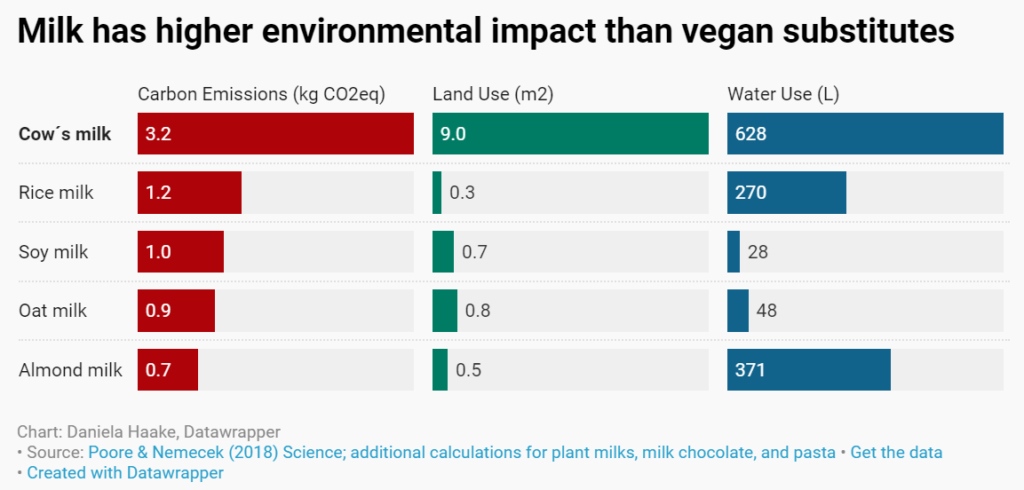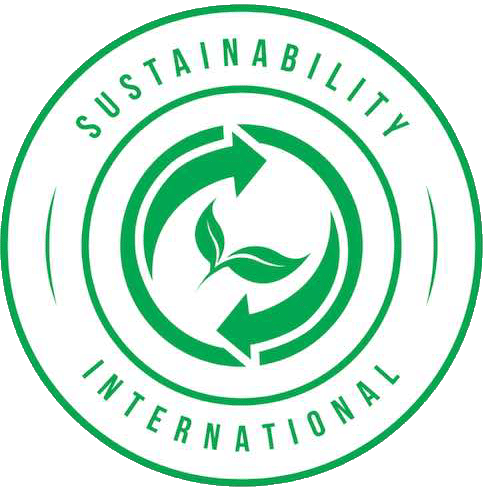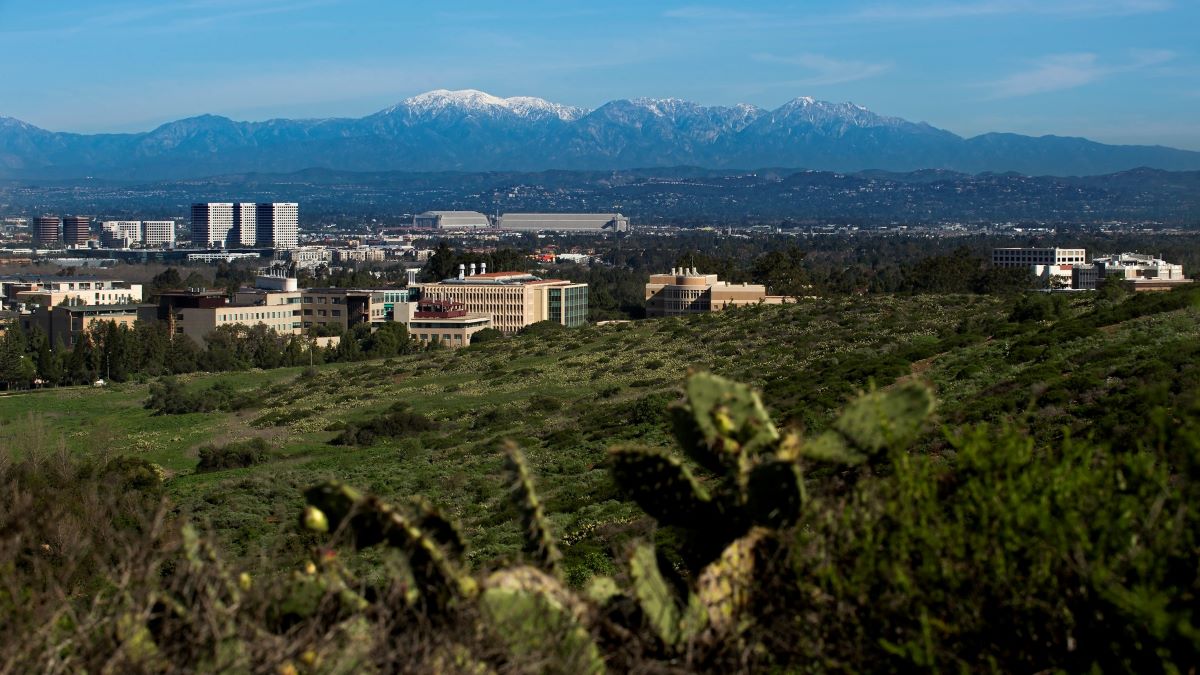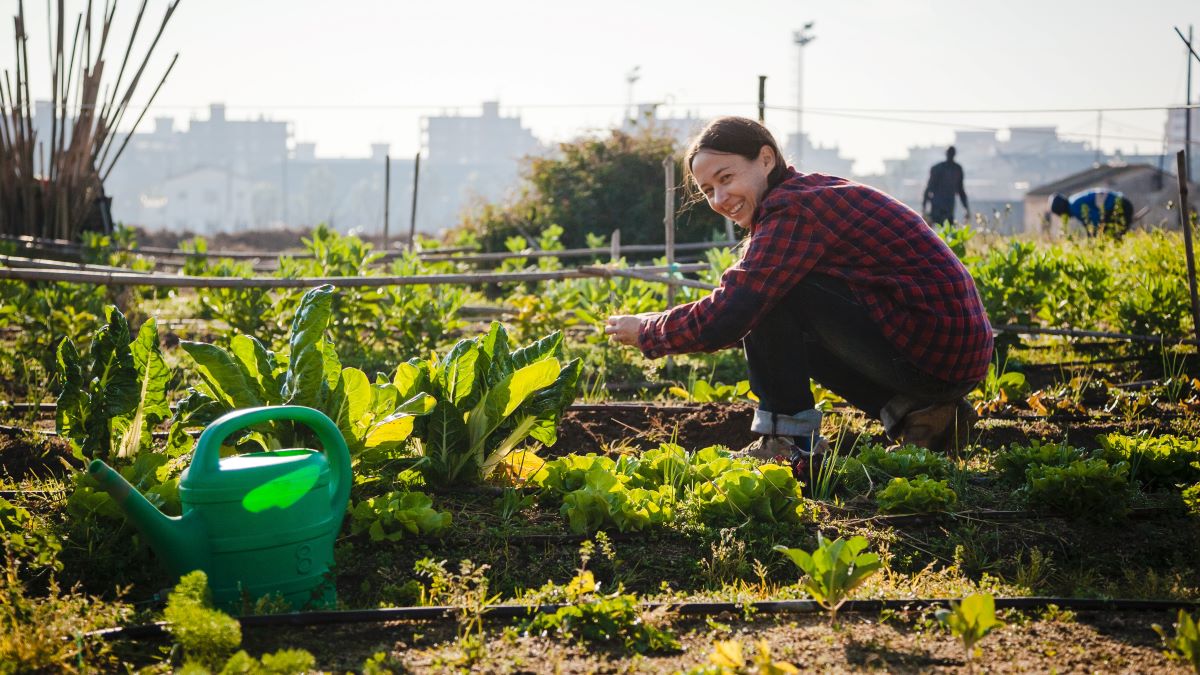Milk may do a body good, but it’s not so kind to the planet. Milk’s ethical and environmental drawbacks have led many people to look for alternatives. And although these are not the only factors, dairy milk sales have dropped 13% in the last decade.
The dozens of milk alternatives available make cutting out dairy easy. But each alternative has its own nutritional, ethical, and environmental profile that makes choosing among them anything but straightforward.
To help you make informed shopping decisions, we rank the greenhouse gas emissions of five of the most popular alternatives to plain-old cow’s milk and explore their overall environmental impacts.

Good – Organic Dairy
For many people – especially the nonallergic, lactose-tolerant who are not ready to go vegan – the nutritional benefits of dairy milk are too great to pass up. Whole milk is a good source of vitamin B12 and calcium and provides up to 7.7 grams of protein per cup – more than any milk alternative.
Unfortunately, conventional dairy production is so intensive that if you take milk in your coffee, most of the climate impact — 32 grams out of 53 grams of carbon dioxide equivalent for your morning drink — comes from the milk. Producing a glass of dairy milk generates around 0.6 kilograms of greenhouse gases and uses around 1,050 liters of water. Let’s put that in perspective, your 12-ounce glass of milk takes 2,958 times as much water to produce as you drink in one cup.
A recent study in Europe found the climate impact per kilogram of milk was only slightly lower for organic milk. But organic milk was clearly better in terms of resource use, biodiversity, and ecotoxicity. And Horizon Organic is pursuing regenerative agriculture practices that it hopes will make it carbon positive within five years.
Better – Rice and Soy
Rice milk has the highest environmental impact of plant-based milks, but still produces only a third of the greenhouse gases per liter that dairy milk does.
Compared to cow milk’s 3.2 kilograms of carbon dioxide equivalents per liter, rice milk produces only 1.2 kg. Soy milk performs a bit better with 1.0 kg of CO2 per liter. The land use impact of these two is almost negligible in comparison to dairy. Even the relatively high use of water to produce rice milk – 270 liters of water per liter of milk – is less than half that of dairy.
In addition to lower greenhouse gases, soy milk also has the lowest water use of the five kinds of milk surveyed. This makes it perhaps the best overall choice when all environmental impacts are considered, especially if you can source milk made from North American-grown beans. (If you are concerned about the fact that so much soy is genetically modified, an industry-funded study found non-GMO pea milk to have similar benefits and impacts to soy.)
Best – Oat and Almond
Oat milk was The Guardian’s pick for most overall sustainable plant-based milk. Oat milk comes in just ahead of soy with 0.9 kg of carbon emissions per liter. But its land-use impacts are slightly higher, and it uses significantly more water. The Oatly brand, which does not use the herbicide Roundup and has made numerous sustainability efforts in its operations, estimates their climate impact at only 0.34 kg/liter – significantly lower than the average emissions for this milk type.
From a carbon standpoint, almond milk is the winner with only 0.7 kg of carbon emissions per liter. It is second only to rice milk in minimizing land use impacts. But almond milk uses 371 liters of water to produce one liter of milk. That’s a little more than half as much as dairy milk. But it is by far the most water-intensive of any plant-based milk. Nearly all almonds are grown in water-scarce climates, which makes their high water use even more damaging.
Making a Choice
The most definitive data available comes from an Oxford study that looked at five kinds of milk: cow, rice, soy, oat, and almond and averaged huge amounts of data. For each milk type, regional agricultural methods and even different brands’ processing methods will affect the actual environmental impact of individual products.

Source: Datawrapper
And there is no scientific method for weighting carbon emissions against other environmental impacts.
There is no clear winner among milk choices. But, environmentalists can relax in knowing that any nondairy milk is significantly less impactful than cow’s milk. This is true for greenhouse gas emissions and across all other measured impacts.
So whether you choose the milk alternative that is good, better, or best for the climate or make your choice based on other environmental factors or nutrition and flavor, your non-dairy milk of choice is a good one.
The post Good, Better, Best: The Climate Impacts of Milks appeared first on Earth 911.







